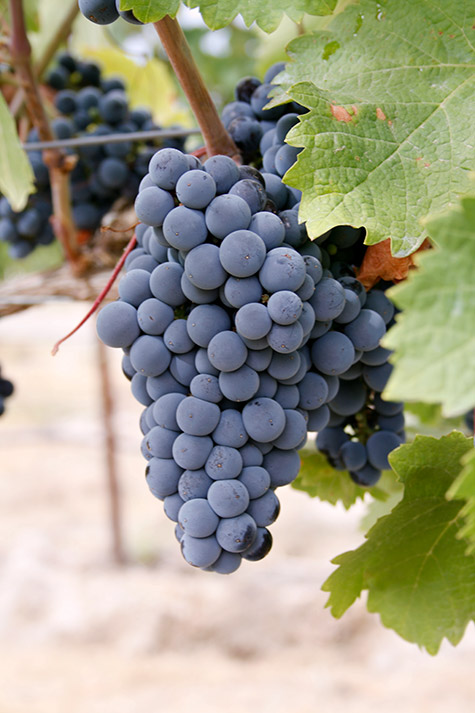The Merlot-down
Ah, Merlot, you corpulent, shar-pei of a wine, you. Despised by many, tolerated by few, I alone sense your inner beauty, your generosity of fruit, your gentle tannins…
… but this? 27.5 brix? 4.02 pH?! Girl, how could you?!
Oh, well. Nothing a tummy tuck and boob job can’t fix. Follow along with me as we do the merlot numbers…
 This year we made the decision to ratchet back our merlot order, since we use very little of it in the Peugeot blend, and many Garagistes have little respect for it solo. So, at only 500lbs and demoted to raw blending material, I felt it could slide a bit if need be.
This year we made the decision to ratchet back our merlot order, since we use very little of it in the Peugeot blend, and many Garagistes have little respect for it solo. So, at only 500lbs and demoted to raw blending material, I felt it could slide a bit if need be.
As it turned out, Elephant Mountain syrah came on line just a little after the merlot ripened, so we decided to wait a day or so and pick them both up together, saving a second 8-hour road trip.
The price of waiting is the following numbers, but I’m not too concerned: we’ll tinker and bring the old girl back into fighting form. The numbers:
brix 27.5 degrees glucose + fructose 28.9 g/100mL pH 4.02 titratable acidity 0.34 g/100mL tartaric acid 4.43 g/L L-malic acid 1.30 g/L potassium 2310 mg/L alpha-amino compounds 74 mg/L ammonia <10 mg/L yeast assimilable nitrogen 78 mg/L (as N)
Analysis:
Well, first of all, look at that pH: holy shit! I don’t think I’ve ever seen one higher. If you’re a bacteria looking for the perfect vacation spot to take your whole family, look no further: this is one full service, three star hotel of a wine.
Second, that brix is pretty high – though not as high as last year! Left alone, that would yield a nearly 16% alcohol wine, a number that sounds good if you’re me when I was 17, but which would probably kill off the yeast before they were completely done converting sugar to alcohol.
Lastly, the the yeast assimilable nitrogen (or “YANK,” as people in the wine industry colorfully call it) is sucking air near the floorboards, which means it’s low on the nutrients yeast need for a healthy fermentation.
That potassium is pretty high, though in line with what Eastern Washington typically seems to yield. I remember a winemaker telling me that potassium tends to bind acid — it’s there but doesn’t fully show up in the pH number. So in our case, this means when we add acid, we need to do it in stages, since a little bit of acid can unlock what the potassium is binding, giving you a bigger jump in overall acidity than you bargained for. But add acid we must, to bring that pH down to healthy, protective level.
So I’ve done three things to this wine already. First, nutrients: some Fermaid (a tasty, nutritional breakfast of nitrogen and yeast food) brought the YAN up and gave the yeasts a leg up to start fermentation.
Second, acid. The rule of thumb is 1 gram/liter of tartaric acid lowers the pH by .1. Since we really want to be in the 3.6-ish range, I started with 2 g/l and we’ll see where we land. It’s critical to add acid as early in the ferment as possible so it gets integrated into the wine, but I’ll give it a day or so to soak up and really show its hand.
Finally, adding a few “Jesus units” (as one wine writer quipped): turning water into wine. I want to reposition the alcohol profile of this merlot closer to 14%, so it won’t taste “hot,” have better balance, and heck, finish fermenting. So in goes the filtered water. After making pinot noir in the 1990s, when rain regularly diluted the harvest, the warning bells clang loudly as you hesitate over the wine with a bucket of water.
But in it goes, and how about that? I wasn’t struck down by angry pinot gods! The wine’s just starting to ferment, and it’s smelling lovely. Our girl’s looking pretty good, actually.
No commentsNo comments yet. Be the first.
Leave a reply
